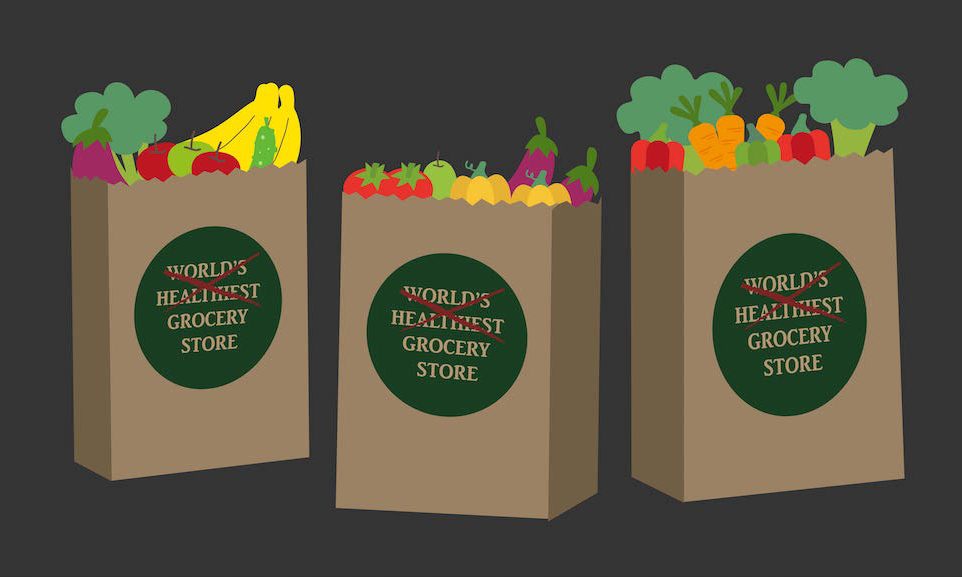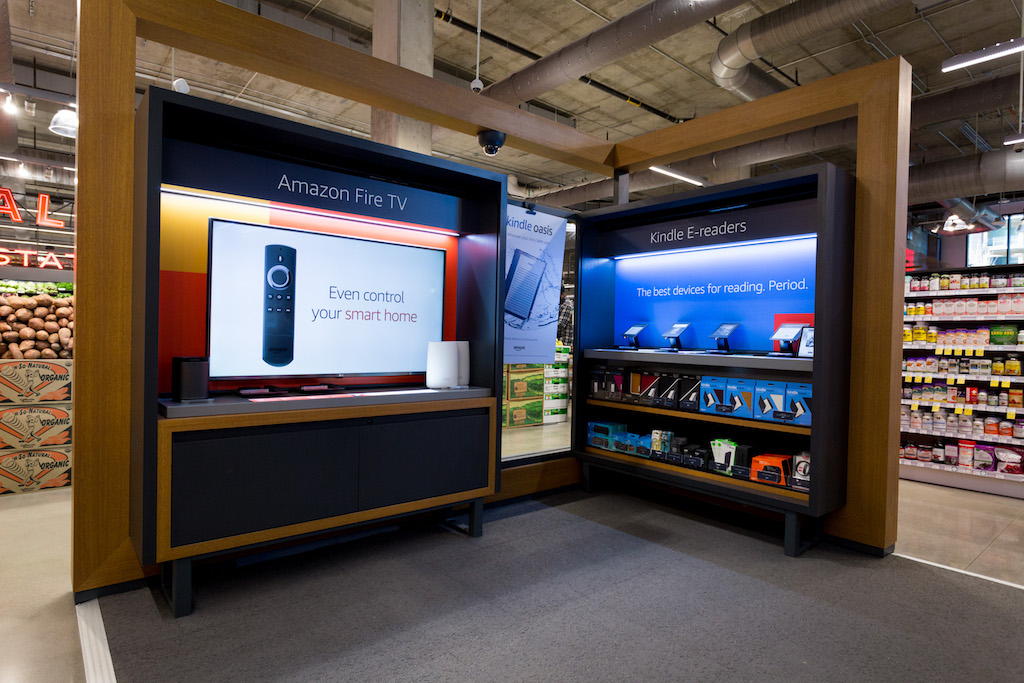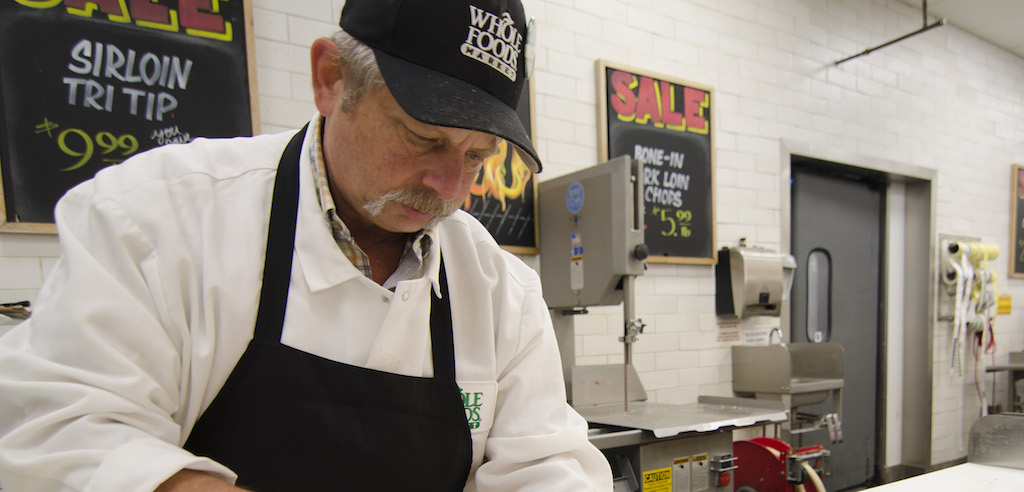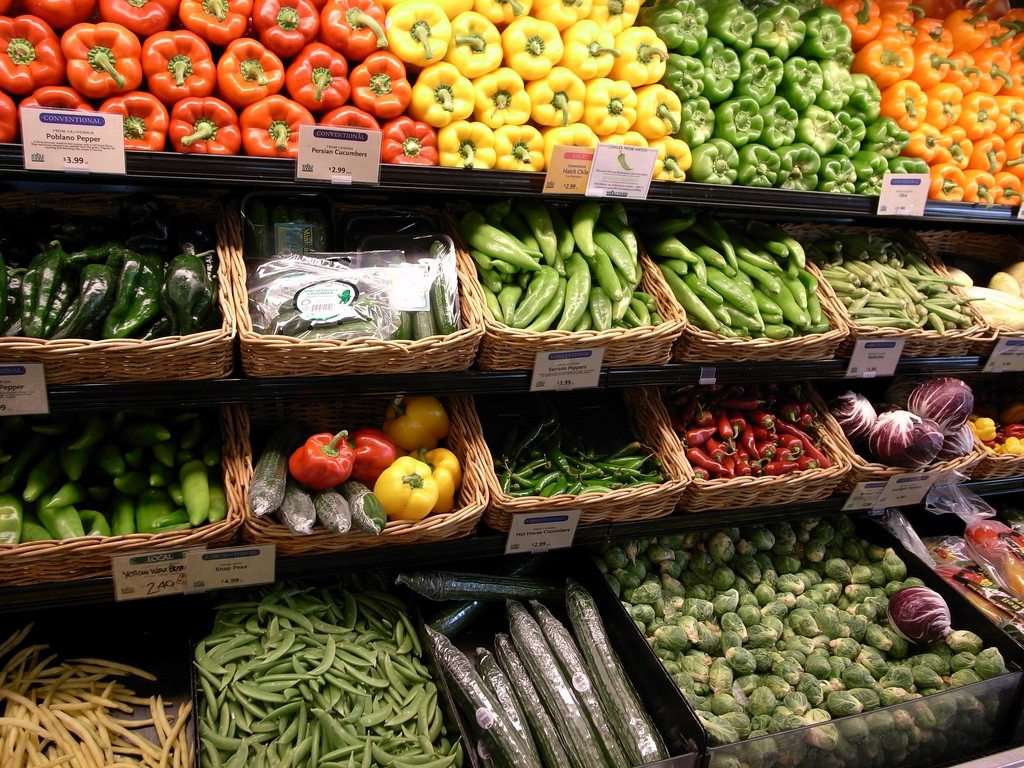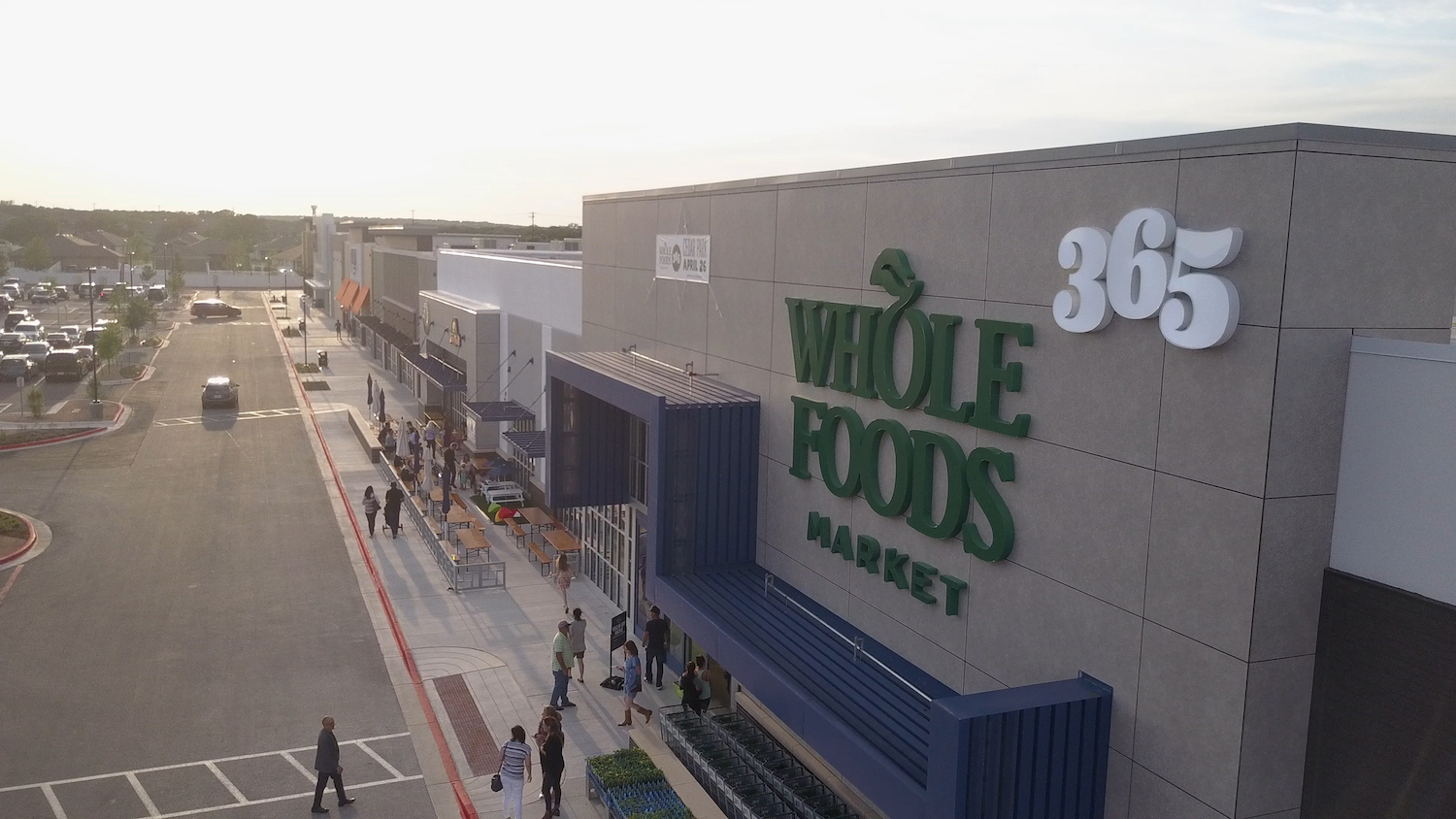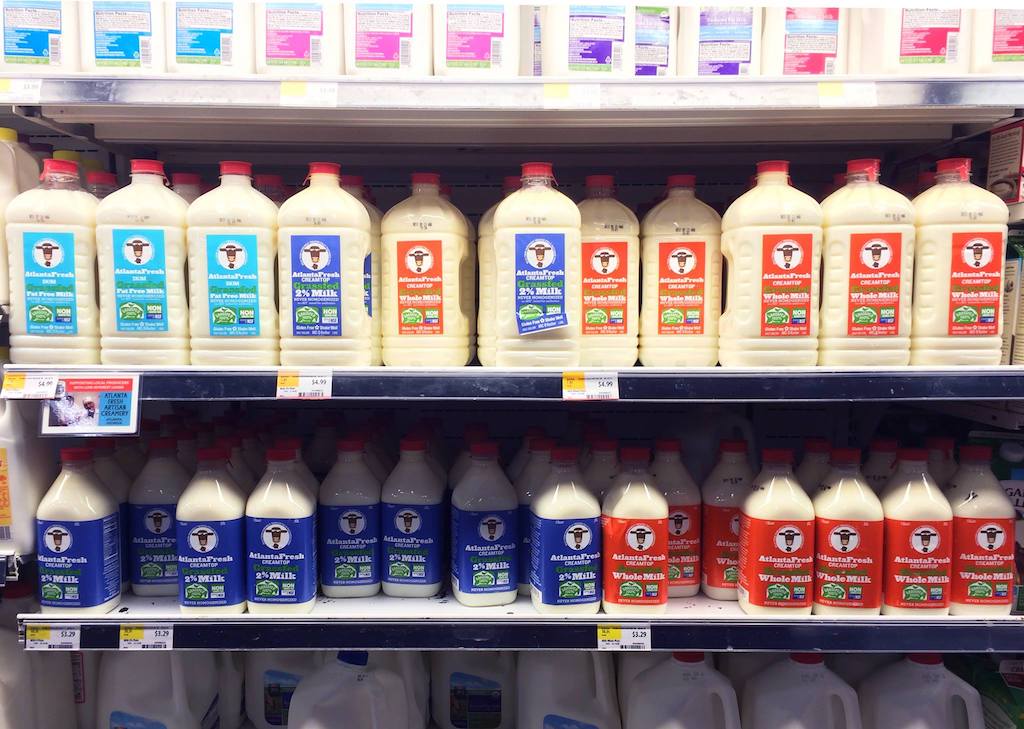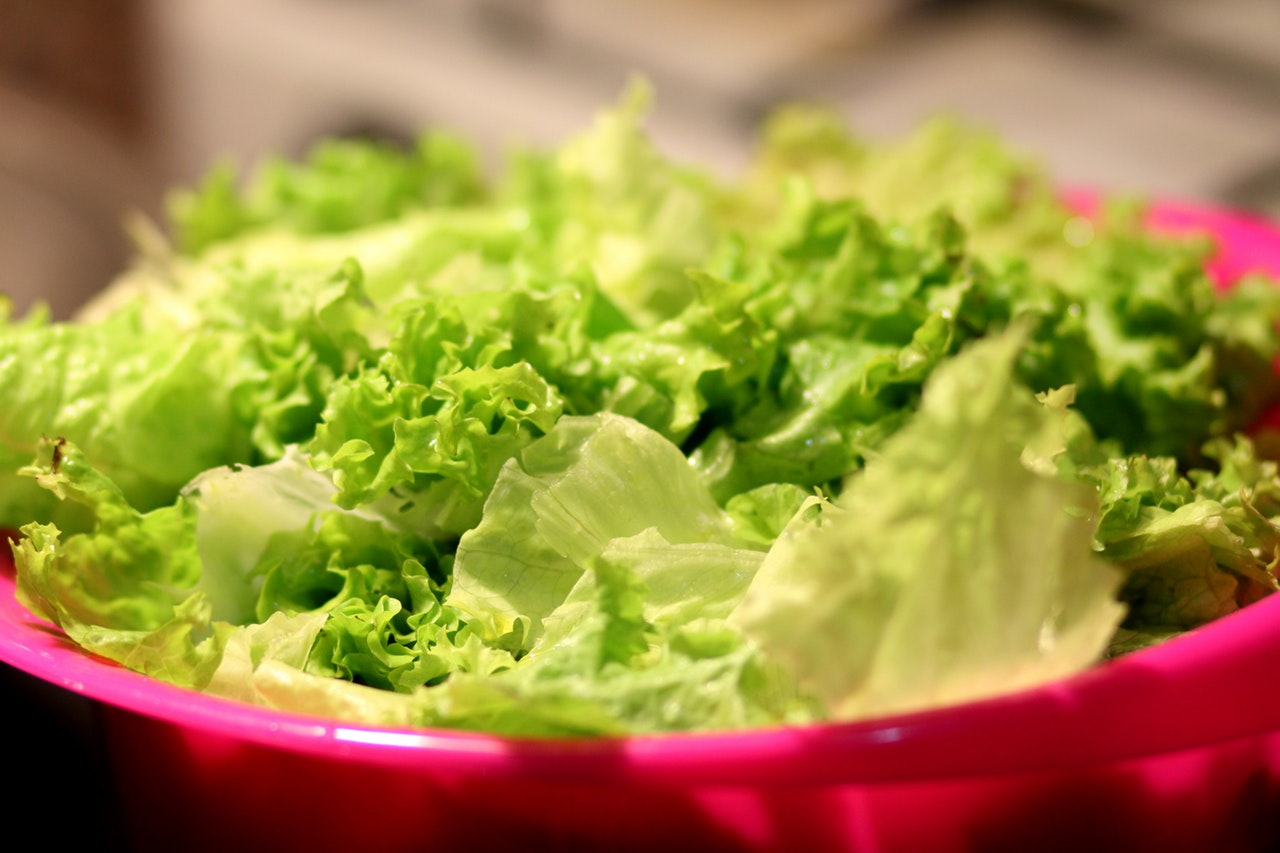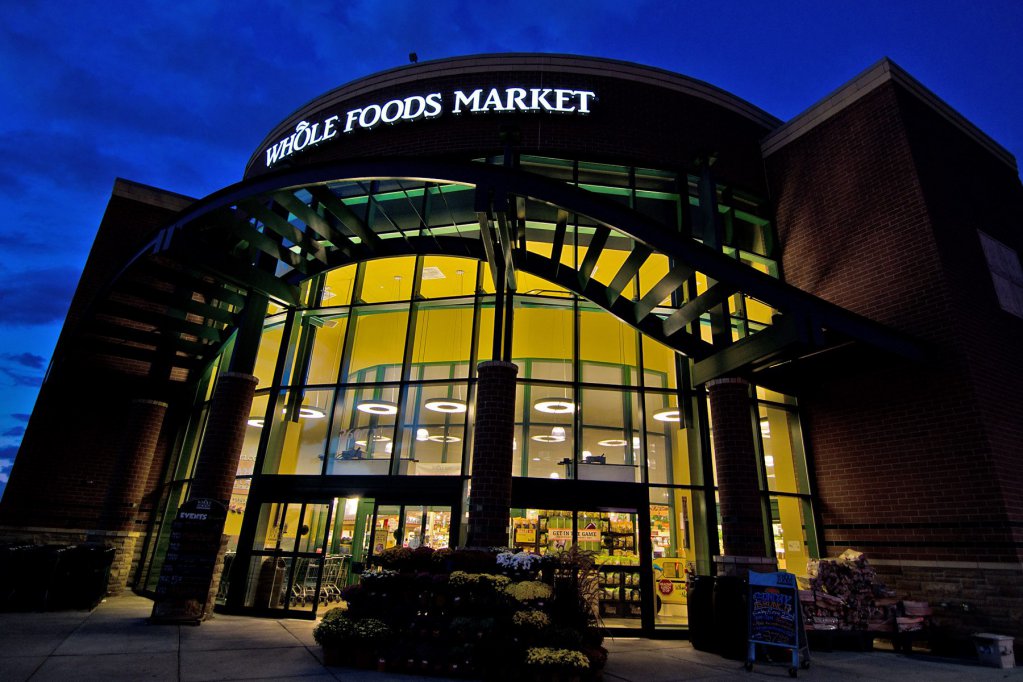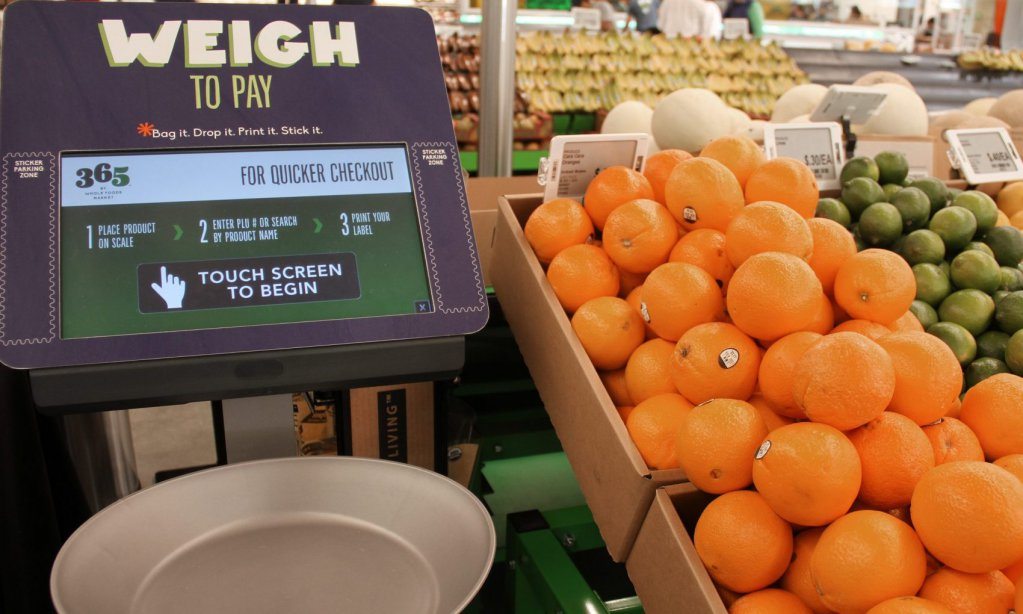
Whole Foods Market
Is it a sign of our food-obsessed times that the opening of a single smaller-than-average grocery store could be covered not just by local reporters, but by global media outlets? Or is it just that there was that much suspense over whether Whole Foods Markets could actually figure out a way to sell reasonably priced food?
At any rate, the first, long-awaited outlet of 365 by Whole Foods Market opened last week in the Silver Lake neighborhood of Los Angeles. A whole lot of folks weighed in, and here’s what they had to say:
The store is small. 28,000 square feet, compared with 41,000 for a typical Whole Foods location. At the same time, the design aims for openness by using low shelving and coolers—so customers can see the whole space at any time—and reduced signage in the center of the store. Fortune reports that future stores will employ the same design, reducing architect costs and making it easier to standardize consumers’ experience. The store arrangement puts prepared foods at the center.
“This contradicts the traditional theory of grocery store design,” says Motley Fool. “Supermarkets generally position staple items like milk, eggs, and bread in the back corners of the stores, forcing customers to walk past the rest of their merchandise in order to get what they need. Like some other retailers, supermarkets tend to make finding the things you want somewhat difficult in the hopes that you’ll stumble upon a different item and make an impulse purchase.
“But with the rise of e-commerce and the increasing importance of convenience, this approach is getting tired. Whole Foods seems to understand this, and designing the store in a navigable way shows respect for the customers’ time and energy.”
 Instagram / wholefoodssilverlake
Instagram / wholefoodssilverlake The store has inspired its own spinoff Instagram, which has been publishing fake stories about Sonic Youth’s bass player being attacked by a coyote and Sleater Kinney bumper stickers
There’s lots of tech—and not many employees. Customers place their prepared food orders through an electronic kiosk. The produce section has readers about the size of iPads with scales that let customers weigh produce and print out price labels for checkout. The price tags on the shelves are digital and can be controlled centrally. All of it is designed to streamline processes and reduce the need for employees. A lot. The typical Whole Foods employs about 230 employees; this one, about 110. “It should not be surprising that the first ‘automated’ WF store is being located in Los Angeles, where state and local governments have passed minimum wage laws that will push wages up by 50 percent in a series of steps to $15 an hour in 2022,” said conservative news website Breitbart.
Thanks to all who alerted us to the fake IG account-please note that this is our only officially Twitter and @365byWholeFoods is official IG
— 365byWholeFoods (@365byWholeFoods) May 30, 2016
But Whole Foods isn’t just saving on head count. All those knowledgeable butchers and wine experts and cheesemongers that give Whole Foods its tone? They’re gone. Meat and cheese come only prepackaged, and you get your advice on wine from stations created by the wine app Delectable. The company is even using the online service Learnup to get job applicants to train themselves in the hope of improving their chances of getting hired.
 Whole Foods Market
Whole Foods Market One of the many innovations at 365: The teaBOT, which brews fresh loose leaf tea
There are fewer products, less organic food, more private label. The typical 365 store is expected to carry about 7,000 products, compared to 40,000 or so at a traditional Whole Foods, reports the Los Angeles Daily News. About half of the produce is organic, less than at a WFM. The store carries brand-name products, but it emphasizes private label—which make up as much as 85 percent of the offerings in some categories. The limited selection didn’t go over well with some early customers. “There’s something condescending about conflating the ideas of value and reduced access to higher quality items. It’s as if we can’t be trusted around bottles of $36 olive oil or premium, freshly cut rib eye steaks,” said Los Angeles magazine.
The food is cheaper, but it’s not always easy to tell. According to Marketwatch, “Credit Suisse … conducted a price comparison between 20 to 30 items at 365, traditional Whole Foods, Kroger and Sprouts stores. The pricing at the 365 stores was found to be most similar to Sprouts and promotional Kroger items, while below the traditional Whole Foods stores, though some pricing was similar.”
The average consumer may have a hard time knowing for sure, because of some of the pricing techniques at the new store. Most produce is priced by the piece or package instead of by the pound, and foods at the salad and hot bar are priced by the container rather than by weight.
Early reviewers tended to love the new system. Said one reviewer for People magazine: “Your typical Whole Foods will put a hole in your wallet at $8.99 per pound (let’s be honest, we all tend to fill up those little paper containers to at least two pounds anyway). However, at 365, you have three sizing options (even the largest isn’t as large as the large size at Whole Foods—hello, portion control!): $5.50 for a small, $7.50 for a medium and $9.50 for a large. You know what this means? You can fill your container up to the brim without having to predict how much your meal will set you back. Genius!” Does this mean the food is actually cheaper? Does it matter?
 Whole Foods Market
Whole Foods Market As much as 85 percent of 365 products are private label
The store has friends. WFM has brought in subsidiary companies to provide extra amenities. There’s currently a coffee, tea, and craft beer bar provided by Allegro. Coming soon is a vegan fast-casual restaurant created and operated by chef Chloe Coscarelli and Samantha Wasser, the folks behind famed New York City vegan restaurant By Chloe. The approach, dubbed Friends of 365, is expected to give the new chain flexibility in customizing stores for specific locations, while offloading some costs.
More 365s are on the way. The second 365 by Whole Foods Market is scheduled to open July 14, in Lake Oswego, Oregon; the third, in Bellevue, Washington, this fall, with up to ten additional stores expected to open in 2017. Gourmet Retailer reports that WFM has signed leases for six additional six locations (Akron and Toledo, Ohio; Bloomington, Indiana; Decatur, Georgia; and North Hollywood and Long Beach, California) bringing the total to 19.
Don’t go there stoned. Early reviews are mixed to favorable. Los Angeles magazine loved the wide aisles and vegan pet cupcakes, though it seemed bothered by an excessive presence of carrots. The analysts were not terribly negative, which is better than many folks expected. Credit Suisse thought the store might not cannibalize the traditional WFM stores too much, and the consensus of analysts was that you should hold on to your shares. But my favorite review uncovered an unforeseen issue at 365. A writer for Elite Daily decided to visit the store after liberal use of his bong. His reactions: “The thicket of meandering bodies was giving me anxiety. The interior design was rigid, plastic, some twisted, unfeeling Milton Glaser look creating the effect that I were some colorful lab rat.”
And: “What did Shakespeare say about a Trader Joe’s by any other name?”
Forewarned is forearmed.

